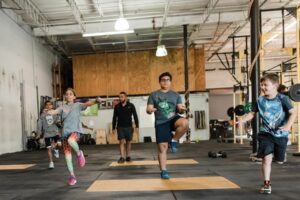Physical activity is crucial for the healthy development of children aged 5-12. Engaging in regular exercise not only promotes physical fitness but also contributes to their overall well-being. Here are ten remarkable benefits of encouraging kids in this age group to engage in physical activity every day:

- Healthy Growth and Development: Daily physical activity helps children develop strong muscles and bones, ensuring proper growth and development. Weight-bearing exercises, in particular, support bone density.
- Improved Cardiovascular Health: Regular physical activity strengthens the heart and lungs, reducing the risk of cardiovascular diseases in adulthood.
- Maintaining a Healthy Weight: Active children are less likely to become overweight or obese. This reduces the risk of obesity-related conditions such as diabetes and hypertension.
- Enhanced Motor Skills: Activities like running, jumping, and climbing help children refine their motor skills, enhancing coordination and balance.
- Boosted Mental Health: Exercise releases endorphins, which improve mood and reduce stress. It can help children manage anxiety and depression, promoting emotional well-being.
- Better Concentration and Academic Performance: Physical activity is linked to improved cognitive function. Kids who are active tend to have better focus, memory, and academic performance.
- Social Interaction: Team sports and group activities promote social skills, cooperation, and communication. Kids learn how to work with others, resolve conflicts, and build friendships.
- Healthy Habits for Life: Encouraging daily physical activity establishes a foundation for a lifetime of fitness. Kids who learn to love exercise are more likely to continue being active as adults.
- Enhanced Sleep Quality: Regular physical activity helps children fall asleep faster and enjoy deeper, more restorative sleep, which is essential for their growth and development.
- Decreased Risk of Chronic Diseases: Engaging in daily physical activity can reduce the risk of developing chronic diseases such as Type 2 diabetes, certain cancers, and osteoporosis later in life.
Incorporating physical activity into a child’s daily routine doesn’t have to be complicated. Simple activities like playing tag, riding bikes, swimming, or going for a family walk can have significant benefits. Additionally, encouraging a variety of activities can keep children engaged and excited about staying active.
It’s essential to ensure that physical activity is fun and age-appropriate, and always prioritize safety by providing protective gear when necessary. By promoting daily physical activity, parents and caregivers can help children lead healthier, happier lives both now and in the future.





